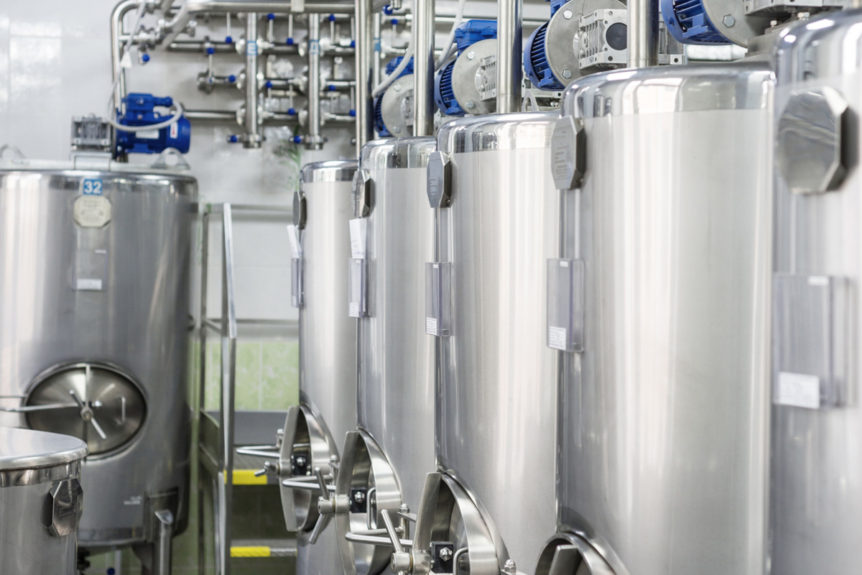Solid State or Solid Phase Fermentations is a process where microorganisms are grown on solid materials with low water contents.
Solid State Fermentation
This process is longer than a deep tank/submerged fermentation, taking up to several days to complete. In this process, the microorganism is grown on a sterilized solid media where the organism can utilize the nutrients in the media, and the enzyme is excreted onto the media’s surface. For Enzymes, wheat bran is commonly used for the fermentation media. Wheat bran contains the necessary nutrients for selected microorganisms, such as Aspergillus oryzae or Aspergillus niger, to grow on it. The microorganism consumes the wheat bran under controlled conditions converting it to cell biomass and enzymes. The enzymes are extracted from the media by an enzyme suspension step, followed by separation processes. The production organism (cell biomass) is then separated from the enzymes and removed before going through a purification process where the enzymes are concentration/filtration. The purified and concentrated enzyme is then freeze-dried or spray dried. After drying, the quality-approved enzyme is standardized based on its activity, blended, and packaged per final customer specifications.
Liquid State or Submerged “Deep Tank” Fermentation
Liquid State or Submerged Fermentation is a process where microorganisms are grown in liquid media. This process starts with a fermentation media consisting of carbohydrates, proteins, and salts, being loaded into a pressurized stainless-steel fermentation vessel, where the media is sterilized. After sterilization, a microorganism such as Bacillus subtilis / amyloliquefaciens / licheniformis or Trichoderma longibrachiatum / reseei is transferred into the fermenter. The microorganism will grow in the sterilized media for up to a few days, utilizing the nutrients in the media to produce the enzyme, which is excreted onto the liquid media. While the microorganism is growing, pH, oxygen, temperature, and the microorganism concentrations are monitored and managed to ensure the productivity of the enzyme. After fermentation, the downstream processes are similar to the solid-state separation processes. The microorganism/biomass cells are removed from the broth, and the enzyme is purified and concentrated. The purified and concentrated enzyme is then dried or made into a liquid stabilized solution. After processing, the quality-approved enzyme is standardized based on its activity, blended, and packaged per final customer specifications.
For further information on solid phase fermentations, or to discuss technical questions on the use of other enzymes, please contact Enzyme Development Corporation at:
info@EnzymeDevelopment.com
Josh@EnzymeDevelopment.com
These suggestions and data are based on information we believe to be reliable. They are offered in good faith, but without guarantee since conditions and methods of use of our products are beyond our control. Suggestions for use of our products should not be understood as recommendations that they be used in violation of any patents or government regulations.
© Enzyme Development Corporation, April 2021

